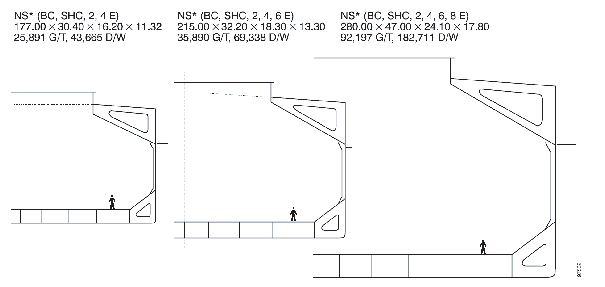5.1 In general, bulk carriers are grouped into 3 categories in accordance with
their size. These are: capesize, panamax, and other smaller types.
Among the smaller types, ships of 30,000 to 45,000 dwt having 5 cargo
holds are called "Handy Bulkers" Panamax bulkers are bulk carriers
having the breadth of 32.2 m which are the largest ships able to transit
the Panama Canal. The ships of this kind usually have 7 cargo holds
and a deadweight of around 50,000 to 60,000 tons. Bulkers with dimensions
greater than the panamax ships are called capesize bulkers. Capesize
bulkers have 9 or more cargo holds and a deadweight in excess of 100,000
tons.

Figure 3 Various bulk carriers
5.2 Capesize and panamax bulk carriers are generally
engaged in carriage of raw materials for industrial plants such as
coal and iron ore. Smaller bulk carriers and some of panamax ones
are generally engaged in the trade of grain. Lumber and industrial
products are generally shipped by handy size or smaller bulkers.
5.3 In the trade of food resources such as wheat,
corn, and lumber, unloading ports usually have no cargo handling facilities
and the bulk carriers employed are often equipped with their own cargo
gear, while panamax or capesize bulk carriers are gearless.